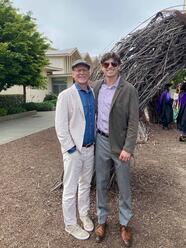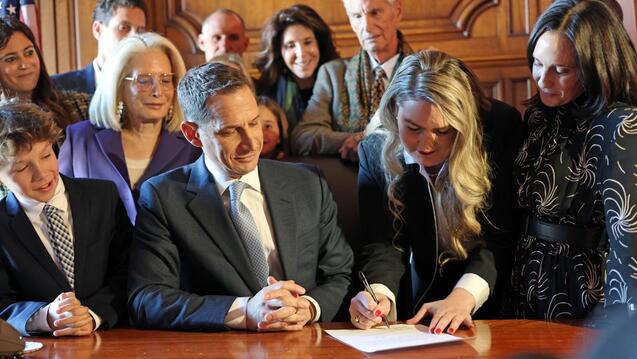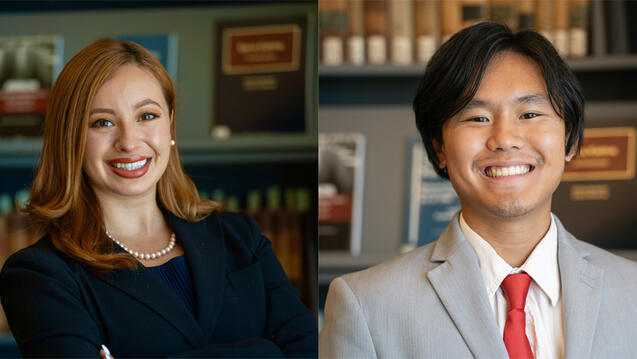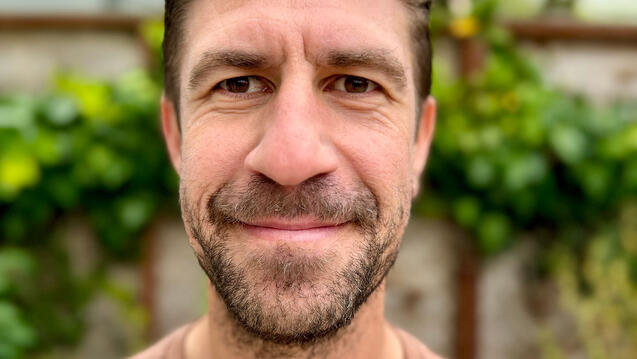
Practicing Excellence With Empathy: ‘Nobody Is as Bad as Their Worst Action’

“The Criminal & Juvenile Justice Clinic at the University of San Francisco School of Law is about getting students comfortable with the uncomfortable,” says Professor Erin M. O’Donnell ‘00, the Assistant Director and Supervising Attorney (and alum of the law school and clinic.) The Criminal & Juvenile Justice Clinic provides students with what can often feel uncomfortable: live cases, direct client relationships, profound insight into social inequity, and experience on the courtroom floor – an unusual opportunity for law students in today's academic training system. Professor O’Donnell beams as she says, “I love seeing students get the bug at the clinic.” And the clinic has a history of infecting students with that ‘bug,’ exemplified by clinic alumnus, criminal defense attorney Gary Goodman ‘88, and his son Gray Goodman ‘24, a USF Law student-clinician before his graduation this May.
Gary Goodman, an established public defender in the Santa Clara Public Defender’s Office since 1990, credits the USF Criminal Justice Clinic for passing the bar, gaining his confidence, and fueling his passion for criminal defense. As a student-clinician in the late eighties, Gary caught ‘the bug’.
Typically, lawyers only get their first real courtroom experience after they pass the bar and start practicing law. Gary notes that in the clinic, “We represented real clients in real, meaningful situations. I learned where to stand. You can always tell new lawyers in the courtroom because they haven’t learned where to stand.”
Gary shares how the Clinic emphasized the importance of both trial advocacy skills and rigorous respect for clients. “As a student, I was taught that this work is not about me. We put our clients at the center. The clinic demanded that we contextualize the lived experience of the people we represented.” In his decades as a public defender, Gary has practiced with the same empathy demanded of him as a student-clinician. “I could have become any kind of lawyer,” says Gary, “but as a student-clinician I found my voice in criminal defense. I learned that nobody is as bad as their worst action.” He adds, “This work is not about me. It’s about understanding our client base and putting them at the forefront.”
Gray, Gary’s son, grew up watching his father in and around court. Led by his father’s example, Gray enrolled in USF’s Criminal & Juvenile Justice Clinic, some forty years later. Last semester, the Clinic sent Gray to a crime scene. His father praises the Clinic’s demand for both empathy and rigorous research. As Gary says, “Sending students to the scene is good mentorship. You have to see how your clients live before you can represent them. It’s really smart. You get the real picture outside of the courtroom before you represent them inside the courtroom.”
“Student-clinicians learn to speak the language of the courtroom,” says O’Donnell. The language of the courtroom is the ability to speak empathetically with the client and professionally with the judge and jury. Often, it takes years of practice before young lawyers learn to translate between the two. Gray, she says, is compassionate, dynamic, and bright, and while all lawyers should have these attributes, criminal defense work requires a higher standard that he meets. When asked if his father guided him to USF and the clinic, Gray says, “Not exactly– my father didn’t tell me what to do. Instead, he guided me by his principles: work your absolute hardest and remember that nobody is as bad as their worst action.”


